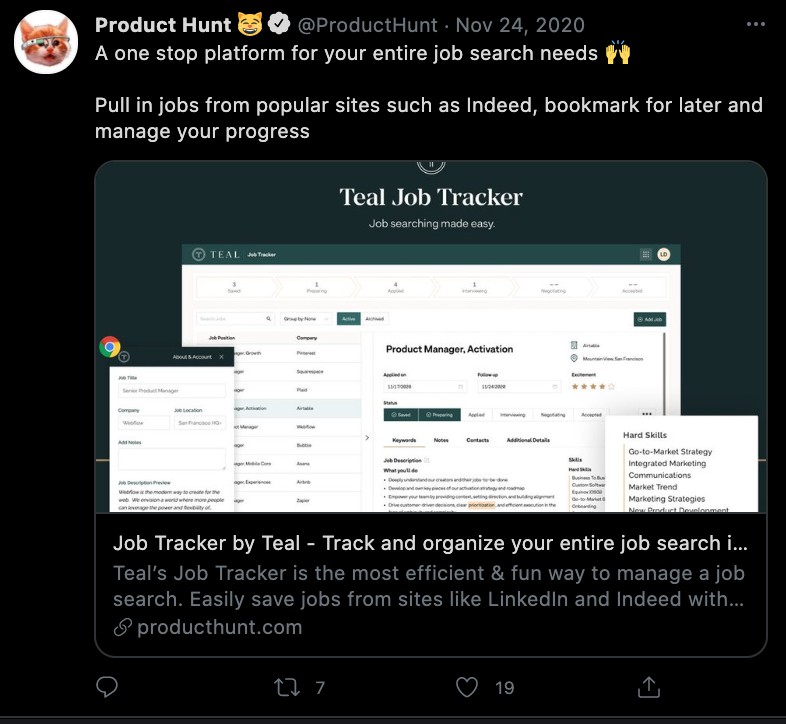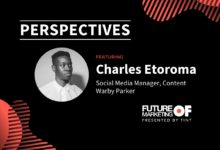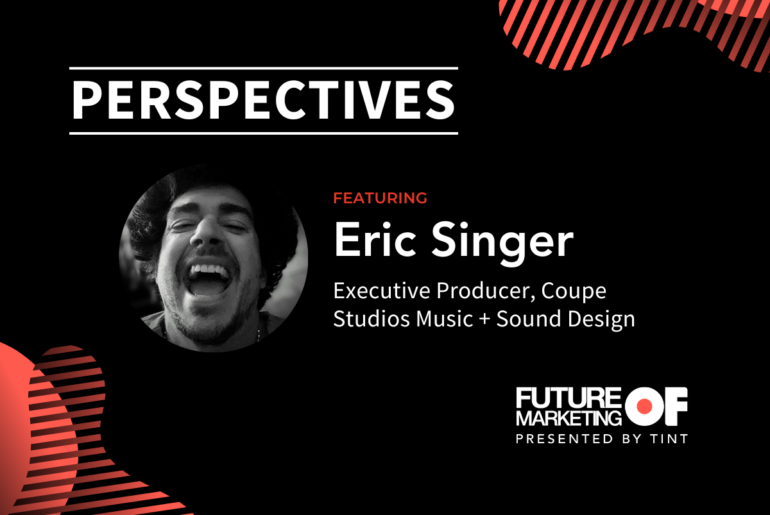You’ve seen your content budget, and it may never seem like enough. Great content takes investment, and in many cases, the cost of content is only increasing.
Creating visual content comes with a cost, but it also comes with high ROI. To use or not to use visuals in paid ads, organic social posts, landing pages, product pages, blog posts, etc. isn’t a question in your content marketing strategy, it’s a necessity.
We’re not here to tell you that it’s time to cut down on the amount of visual content you’re posting. Especially given that when people hear information, they’re likely to remember only 10% of that information three days later. However, when relevant imagery is paired with that same information, people retain 65% of the information three days later. That’s just one reason why even though visual content comes with a price tag, you have to keep doing it.
You can also find ways around spending a lot of money on creating your own content, so you can post more and spend less. We’ll get into that later, after we’ve covered what visual content is and how it’s used in your marketing strategy.
Visual Content: How To Use It In Your Marketing Strategy
Visual content is a photo, video, or graphics your brand posts to promote your products. It’s posted at every stage of the buying journey. It’s the cold lead Facebook ad building brand awareness with the target audience, the organic content posted to your socials that made them engage with your brand, or the product photos on your product page that converted them. It’s also the visuals that motivate them to buy your high-tier products or become a paying subscriber.
That’s why the role of visuals play such a big part in content strategies. At every stage of the customer journey, when used correctly, the right visual content can move ideal customers through the journey faster.
Here are some examples of visual content.
Jewelry brand Aureum Collective uses Instagram visuals to promote their jewelry. They’re also using Instagram’s commerce feature (seen in the bottom left-hand corner) to create their own commerce store on Instagram. Users can buy Aureum Collective jewelry without ever leaving the Instagram app.
Product Hunt uses visual content on their Twitter feed by regularly posting tweets about the new products they’re featuring. In this example, their tweet is visual content paired with more visual content with the image brought in from their link.
Function of Beauty uses visual content of customer testimonials on their landing page. They repost customer tweets directly to their website and pair it with the social proof of 53,000 5 star reviews.
As you see in these examples, you need visual content in a lot of places. Here are a few ideas to get your creativity flowing:
- Organic social posts
- Paid social posts
- Landing page
- Sales page
- About Us page
- Product pages
- Product packaging
- Emails
- On digitally delivered products
- Company Email signature
- Magazines
- Screens inside your venue
- Events
- Presentations
- Advertising
- Billboards
- Etc.
This is hardly a comprehensive list of the places you can use visual content in your marketing strategy. But, it’s definitely a start. The problem is rarely where you use visual content, but instead—how do you get it?
Let’s take a look at the cost of content creation to figure out how you can create high-converting visual content regularly without burning through your marketing budget.
The Cost of Content Creation
Content marketing costs money. It’s not a secret that product shoots come with a big budget or that good consistency on social media means you have a dedicated team shooting native content regularly.
There are generally two places you’re going to spend your content budget: in research and development.
Content Research
Content research is like market research. You don’t want to create a product and hire a team before you’ve talked to the market and made sure they actually want this product. The same applies to content—you don’t want to hire a content team and then give them a huge budget without ever asking your customers what they want to see from you.
That’s where content creation costs can turn from a great ROI to a painful, expensive lesson.
Content creation dives deep into your market to figure out what they want to see from your brand.
- What can your audience not scroll past on social without stopping for a second look?
- What content can you post that creates virality within your niche?
- What content creates a conversion?
To get this right the first time, you’ll go to two places:
- Your competitors
- Your customers
The first thing you’ll do in content research is to see what your best competitors are doing.
- Who’s creating the content that has the highest engagement?
- What do their visuals look like?
- Was their content created in-house, or is it repurposed user-generated content?
Take note of what they’re doing that’s working. Then, go to the competitor who has the least amount of engagement. Instead of figuring out what they’re doing right like we did last time, you’re going to focus on what they’re doing wrong.
- Who’s creating the content that has the lowest engagement?
- Which visuals have the least amount of engagement?
- Is all of their content made in-house?
You’re asking these questions to be able to nail down what works and what doesn’t work. Knowing this, you can move on to asking your customer what they want to see from you. You’re asking your customer second because you don’t want to go to them and say, “What content do you want to see from us?”
You might get some quality responses, but you’ll get much more engagement if you ask, “Do you want to see X or Y from us?”
Giving options as to what content to create helps your customer choose what they want to see more of. Don’t assume your customers are so well-versed in content that they’re going to ask for “Loom style tutorials that are about 5-minutes long and end with an action item that helps me get started with your software today.”
Give them options to choose from.
This part of the content process takes time and resources. You’ll be paying your content team to put all of this together, while not creating any content. This is where content creation can start to run up a bill and is a huge reason brands turn to user-generated content.
User-generated content (UGC) is an image, video, testimonial, feedback, or comment from a customer about a product. It generally comes at the three most exciting stages of the buying journey:
- When the customer makes their purchase
- When the customer receives their product
- When the customer gets the positive benefit of the product
One reason brands turn to UGC because it doesn’t require market research, in fact, the market research is built in! They use UGC that’s already performing well (proven) on social from an “average customer’s” social account or a nano or micro influencer. And save the weeks of research it takes their team to put together a solid content plan, which can equate to tens of thousands of dollars depending on the team’s size.
If you have a dedicated content producer or manager on your team and you’re paying them $72,000 a year, you could be spending $3,000 on content research. This number assumes your content manager needs two-weeks to do content research and put together a solid plan (this is their weekly salary of $1,500 multiplied by 2). If the content producer works with other content team members or contractors, your content research budget is increasing… fast.
With the first half of your content creation plan together, let’s consider how to put your content development together and how much to expect to pay for it.
Content Development
Knowing what types of content to create, your team will be put to work to develop it. Depending on the product, this might involve product shoots, employee shoots, and content shoots for regular content. This can also involve location shoots and models.
Generally, you can expect to:
- Pay a model about $60 per hour
- Pay $25-$60 per hour for a simple minimalist studio
- Pay hundreds to thousands of dollars per day for an upgraded studio or home rental
- Pay a professional photographer an average of $100 to $250 per hour
This doesn’t include the time or money spent on location scouting. You’ll also be budgeting for employee and contractor salaries during development.
In total, your initial content development is going to cost four-figures at the bare minimum for a small brand with few products and simple content needs. The more products you have and the more complex your content needs to be, the higher the price tag to expect.
Once your content is shot, it’s time to move on to editing. A novice freelance video editor costs an average of $27/hour, while an expert will price themselves at a few hundred dollars per hour. You’ll also need to have someone supervising the editing process to make sure it stays on track and is on schedule for delivery. This might be your content producer or an outsourced project manager.
If you don’t want this type of price tag for content production, there are other options. You can:
- Buy content from a third-party, so you don’t have to pay the premium of creating it yourself (where the cost of even one piece of content can be hundreds to thousands of dollars)
- Use stock content to get immediate access to the content you need (again the cost of just one piece of content can be hundreds to thousands of dollars)
- Inspire, collect, curate and use UGC to get high quality content fast
The key to user-generated content is to make sure you have a system for finding it, collecting it, organizing it, getting the rights to it, and redistributing it. Once your system is set up, you’re going to have a stream of UGC that’s constantly making its way to your content distribution team.
With UGC, you don’t have to set up content research or development. You won’t have to rent out locations, hire models, or pay professional photographers and videographers. You’ll also be sure you’re creating the content your customers are interested in seeing.
How will you be sure?
Seventy percent of consumers trust online peer reviews and recommendations more than professional content and copy. This means that your expensive product shoot could have a smaller ROI than asking one of your customers if you can repurpose their Instagram post.
- Ads based on user-generated content receive 4 times higher click-through rates and a 50% drop in cost-per-click compared to average ads
- Websites with featured user content saw a 20% increase in return visitors and a 90% increase in time spent on-site
- Forty-eight percent of consumers say that user-generated content is a great method for them to discover new products
Great content marketing takes an investment, but that investment isn’t always in dollars. Sometimes that investment is in finding the right tool that can collect high-converting content for you so you can repurpose it across your highly engaged marketing channels.
Subscribe to Future of Marketing to learn more about how to leverage UGC for better visual content.








